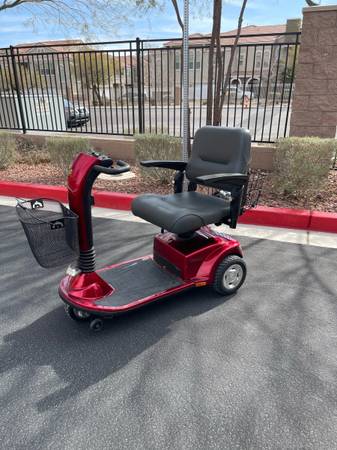Scooter Expertise: Tips for Maintaining Battery Life
For numerous people facing mobility issues, scooters give the opportunity to explore their surroundings and sustain an active lifestyle. Nonetheless, the reliability of these essential devices largely depends on the health of their batteries. Knowing how to maintain your mobility scooter battery can significantly extend its lifespan, allowing you to have continuous adventures and greater freedom.
In this resource, we will discuss practical tips and best practices to help you maintain your mobility scooter battery going strong. From correct charging methods to regular upkeep, these insights will guarantee that your scooter is prepared for use when you require it the most. Let’s explore the essential steps to optimizing the performance of your battery and increasing the lifespan of your mobility scooter.
Grasping Mobility Wheelchair Power Sources
Mobility wheelchair power sources are essential components that run these vehicles, allowing individuals to maintain their independence and transport. Most wheelchairs use either lead-acid or LI-ion power sources. Lead-acid power sources are widely used due to their cost-effectiveness and reliability, while lithium-ion power sources offer a lighter weight, increased lifespan, and more rapid charging times. Knowing the type of battery in your scooter is crucial for satisfactory maintenance and longevity.
The efficiency of electric wheelchair batteries can be affected by several factors, including how they are used, surrounding conditions, and upkeep routines. Frequent use in varying environments may drain the power source faster, whereas extreme weather conditions can alter its performance. Keeping your scooter power source at an appropriate temperature and avoiding excessive depletions can significantly enhance its durability. Being mindful of these variables will help ensure a stable riding journey.

Regular upkeep is vital for the well-being of electric wheelchair batteries. This includes evaluating the terminals for degradation, ensuring attachments are secure, and performing periodic capacity tests. Additionally, it is crucial to adhere to the manufacturer's guidelines for recharging and maintenance, as improper handling can lead to lowered battery efficiency. By understanding and caring for your assistive wheelchair power source, you can maximize its reliability and trustworthiness.
Maintenance Advice for Longevity
To maximize the duration of your mobility scooter batteries, consistent upkeep is crucial. Clean the battery terminals regularly to prevent oxidation, which can hinder functionality. Use a damp cloth to wipe off any dirt or grime, and if necessary, apply a dedicated battery terminal cleaner. Maintaining a clean connection will help preserve optimal power flow and avoid premature battery failure.
A further key aspect of maintenance is ensuring proper charging practices. It is important to charge your mobility scooter batteries after each use, even for brief trips. However, avoid overcharging by disconnecting the charger once the batteries are fully charged. Using a smart charger that by itself shuts off can assist you in this aspect. Additionally, check the charge level occasionally and avoid letting the battery deplete completely, as deep discharges can significantly reduce battery life.
Lastly, keep your scooter in a proper environment. Severe temperatures can negatively affect battery performance and longevity. Store your mobility scooter in a temperature-controlled location, ideally between 50 and 80 degrees Fahrenheit. Avoid exposing the batteries to extreme cold or heat, which can result in reduced capacity and lifespan. By following these maintenance tips, you can guarantee your mobility scooter batteries stay strong and reliable for an extended period.
Addressing Typical Power Issues
One of the frequent issues with mobility scooter batteries is reduced distance. If you notice that your scooter doesn't go as far on a single charge as it used to, it might be time to check the battery's health. First, make sure the battery is completely charged prior to each use. Should the issue continue, consider testing the battery voltage with a multimeter. A significant drop in voltage can indicate that the battery is approaching the end of its life and might require replacing.
Another problem you might face is the battery not charging whatsoever. Begin by examining the charger to ensure it is functioning properly. Check for any damaged cords or links, as these may stop the battery from charging. Additionally, look at the battery terminals for corrosion or dirt, which may hinder the charging process. Cleaning the terminals carefully can often fix charging issues, but if the battery is unresponsive to charging attempts, it may be a sign of a deeper problem.
Finally, if your mobility scooter faces sudden power loss while in use, it could be related to the battery's condition. Begin by checking the links between the battery and the scooter, making sure all cables are firmly connected. If connections are good but the issue persists, the battery could be unable to deliver the necessary power. Testing the battery under load using proper tools can help ascertain if the battery needs replacing. Keeping an eye on these common battery issues can help you maintain your mobility scooter efficiently.